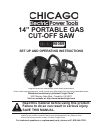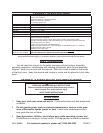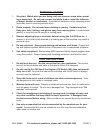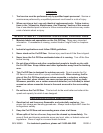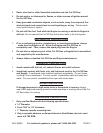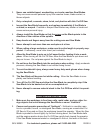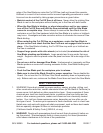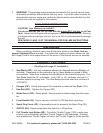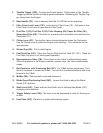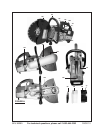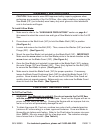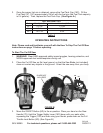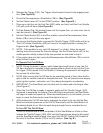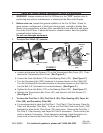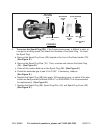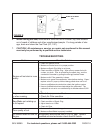
SKU 98089 For technical questions, please call 1-800-444-3353 PAGE 7
edge of the Saw Blade can raise the Cut Off Saw (walk up) toward the operator.
Kickback is a result of tool misuse and/or incorrect operating procedures or condi-
tions and can be avoided by taking proper precautions as given below:
Maintain control of the Cut Off Saw at all times. • Never allow the rotating Saw
Blade to rest on the workpiece without holding on to the Saw with both hands.
When the Saw Blade is binding, or when interrupting a cut for any reason, •
turn off the Cut Off Saw and hold the Saw motionless until the Saw Blade
comes to a complete stop. Never attempt to remove the Saw Blade from the
workpiece or pull the Saw backward while the Saw Blade is in motion or kickback
may occur. Investigate and take corrective actions to eliminate the cause of Saw
Blade binding.
When restarting the Cut Off Saw on a workpiece, center the Saw Blade in •
the pre-cut kerf and check that the Saw Teeth are not engaged into the work-
piece. If the Saw Blade is binding, the Cut Off Saw may walk up or kickback as
the Saw is restarted.
Support large panels with roller stands • (not included) to minimize the risk of
Saw Blade pinching and kickback. Large panels tend to sag under their own
weight. Supports must be placed under the panel and near the outer edge of the
panel.
Do not use a dull or damaged Saw Blade. • Unsharpened or improperly set Saw
Blades produce a narrow kerf causing excessive friction, Saw Blade binding and
kickback.
Push the Saw Blade past the workpiece prior to release.•
Make sure to check the Blade Guard for proper operation.• Never disable the
Guard. Do not use the Cut Off Saw if the Guard assembly does not operate prop-
erly. Before each use, make sure the Blade Guard does not touch the Saw Blade.
MISC. PRECAUTIONS
WARNING! Some dust created by power sanding, sawing, grinding, drilling, and 1.
other construction activities, contain chemicals known (to the State of California) to
cause cancer, birth defects or other reproductive harm. Some examples of these
chemicals are: lead from lead-based paints, crystalline silica from bricks and ce-
ment or other masonry products, arsenic and chromium from chemically treated
lumber. Your risk from these exposures varies, depending on how often you do
this type of work. To reduce your exposure to these chemicals: work in a well ven-
tilated area, and work with approved safety equipment, such as those dust masks
that are specially designed to lter out microscopic particles.
(California Health & Safety Code § 25249.5, et seq.)
WARNING! 2. People with pacemakers should consult their physician(s) before us-
ing this product. Electromagnetic elds in close proximity to a heart pacemaker
could cause interference to or failure of the pacemaker.



